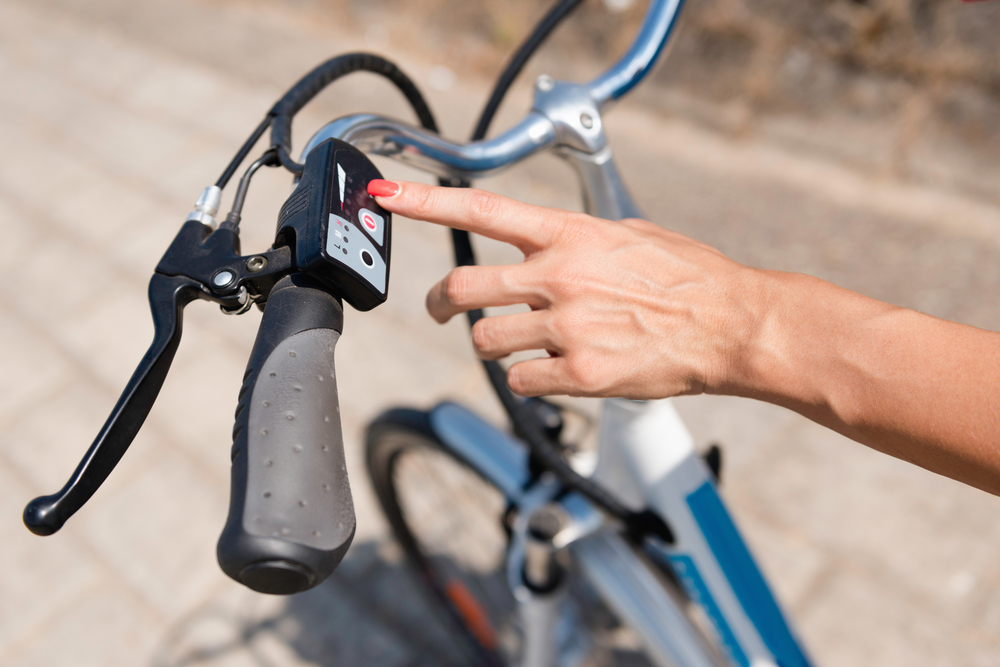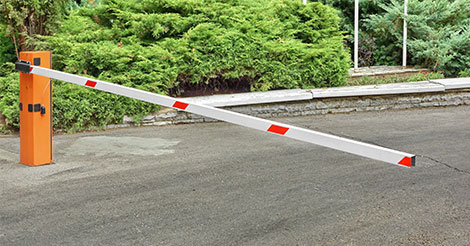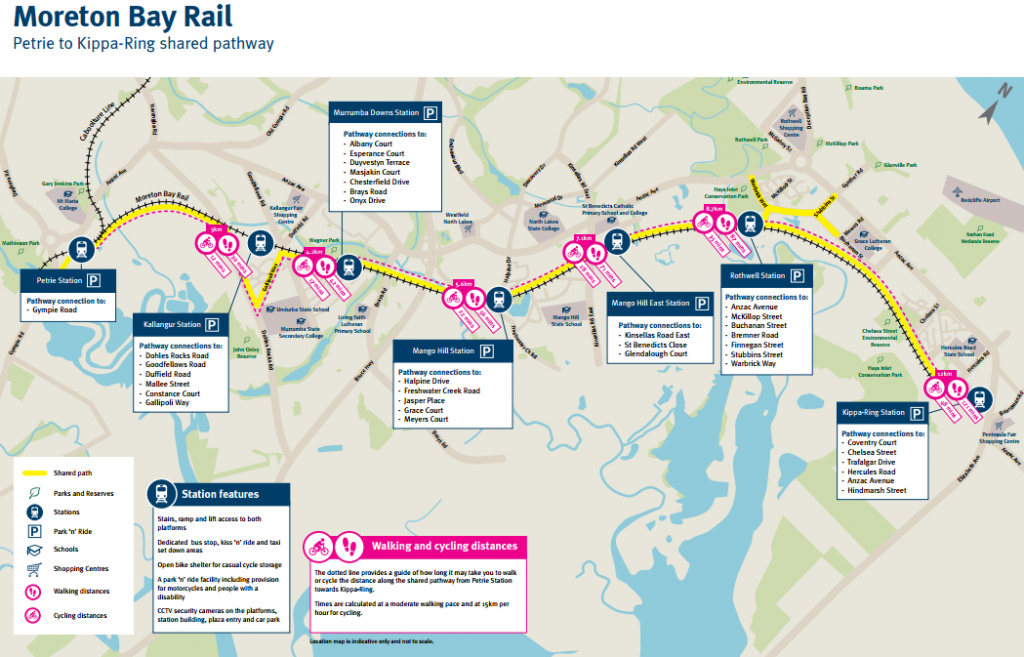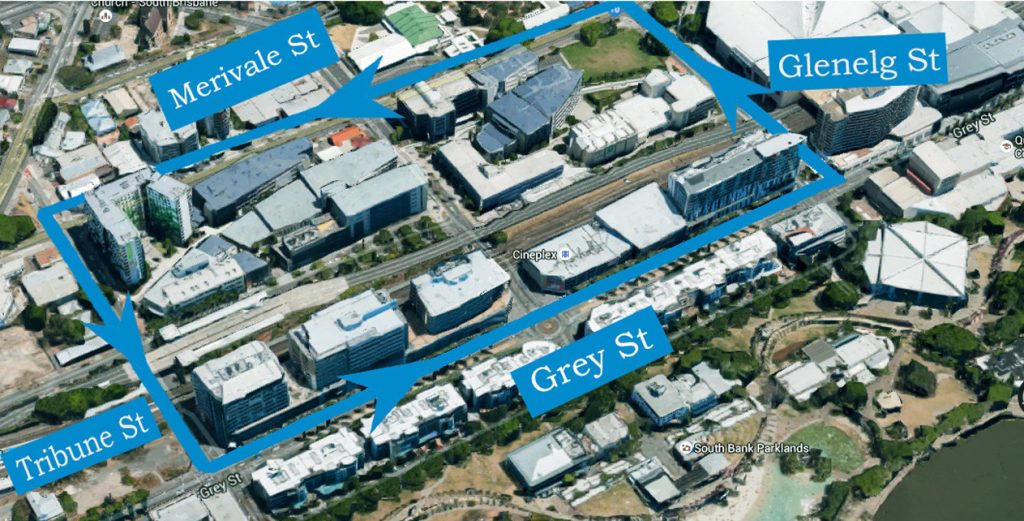All posts by Emily Billiau

12.6Km Of Brand New Bike Path Opened
From Petrie To Kippa-Ring
The long awaited Moreton Bay Rail Link opened recently, which included 12.6km of fresh,new shared path cycling tarmac.
The path passes through Kallangur, Murrumba Downs, Mango Hill and Rothwell with almost 40 connections branching off, making it easy to get to many locations throughout the area.
It also gives easy access to 7 railway stations:
- Petrie Station
- Kallangur Station
- Murrumba Downs Station
- Mango Hill Station
- Mango Hill Station East
- Rothwell Station
- Kippa-Ring Station
as well as some stunning natural beauty spots including Lake Eden,John Oxley Reserve,Sweeney Reserve and Wyllie Park.
To read more about this new biking opportunity click here

The Brisbane Blast
Brisbane Blast – Road Cycling For Road Cycling Junkies
It’s not often South Bank gets closed down for cyclists but that’s exactly what will happen on Sunday November 20. Organised by QSM, the Brisbane Blast will run a range of races and formats aimed at:
- teams and groups of mates who cycle
- corporate teams – great team building experience, branding and involvement in mens health promotion
- graded riders looking for a highly competitive experience
- raising awareness of men’s health and raising funds for Movember
- providing a great spectator experience and community involvement
To find out more and register for this great event, click here

Information Sheet – Electric Bicycles
Electric Bicycles
What is an Electric Bicycle?
An electric bicycle (or e-bike) is a bicycle with a motorised assistance.
There are two types of legal motorised bicycles:-
- Those that require the cyclist to move the pedals to maintain electrical assistance (pedalec); and
- Bicycles with a handlebar throttle, that allow a cyclist to travel without using the pedals1
Design Rules / Requirements
The Australian Design Rules (ADRs) are national standards which dictate vehicle requirements. For vehicles manufactured post-1989, the application of the ADRs is the responsibility of the Federal Government pursuant to the Motor Vehicle Standards Act 1989 (Cth).
In 2012, changes were announced to the national vehicle safety standards in relation to power-assisted bicycles.
There are two types of legal motorised bicycles in Queensland (as described above) and the requirements vary for each. The pedalec type of bicycle must comply with the European Standard for Power Assisted Pedal Cycles (EN15194). The bicycle can have a maximum of only 250 watts of power and must be marked to show that it complies with the standard.
Bicycles with a handlebar throttle can have a motor that generates no more than 200 watts of power. If it is capable of generating more than 200 watts of power or has an internal combustion engine, then the bicycle must comply with Australian Design Rules for a motorbike and cannot be ridden on roads or road-related areas if it does not comply with these standards.
Do riders of Electric Bicycles have to comply with the Road Rules?
Yes. Bicycles are considered vehicles under legislation in Queensland, and so riders must obey the general road rules as they apply to vehicle operators.
1NB – The pedals should still be the primary source of power for the bicycle. If a rider can complete a journey without using the pedals and powered solely by the motor, then this would not be classed as a motorised bicycle
By Emily Billiau and Gemma Sweeney

Case Study – The Motorised Bicycle
Hendricks v El-Dik & Insurance Australia Limited T/AS NRMA Insurance (No 4) [2016] ACTSC 160
This decision involved a Plaintiff cyclist who was injured when he was struck by a motor vehicle driven by the First Defendant.
The Plaintiff had been cycling home from his workplace. His route took him along a cycle path which included a section that cut across a number of driveways, including the driveway of the First Defendant motorist.
As the Plaintiff cyclist approached the driveway of the First Defendant, the First Defendant reversed out of his driveway and into the path of the Plaintiff cyclist – causing the Plaintiff cyclist to collide heavily with the passenger side of the vehicle.
Unfortunately, the Plaintiff’s head collided with the vehicle. The Plaintiff sustained significant spinal injuries and was rendered a quadriplegic.
Relevantly, the Plaintiff’s bicycle was fitted with a 500W capacity electric motor.
Although damages were agreed between the parties at $12 million, liability could not be agreed and the matter proceeded to trial.
The Defendants alleged that the Plaintiff cyclist was contributory negligent (that is, that they cyclist’s negligence contributed to the harm he suffered.) The alleged grounds of the Plaintiff’s contributory negligence were as follows:-
- Operating a registrable but unregistered bicycle powered by a 500W motor on the path;
- Travelling at an excessive speed;
- Failing to keep a proper lookout;
- Failing to have a horn installed on the bicycle; and
- Failing to deviate from the path rather than continue along the path across the driveway.
The Plaintiff was found contributory negligent in the order of 25% on the basis that he failed to keep a proper lookout. The other grounds were not made out.
Interestingly, the issue of the electric motor that was fixed to the bicycle was examined in some detail.
Unbeknownst to the Plaintiff, the law in the ACT required that the capacity of the electric motor not exceed 200W. The Plaintiff cyclist argued that there was no causal link between the increased capacity of his motor (500W) and the damage suffered by him. In the circumstances, he contended that there were insufficient grounds for a finding of contributory negligence on that basis.
Expert evidence was adduced at the trial showing that the bicycle’s maximum speed with the motor was no greater than 24km/hr, and that the Plaintiff cyclist had been travelling at a speed of between 15 and 20km/hr at the time of the accident. This speed was said to be similar to the speed adopted by other users of the particular bicycle path.
The Court ultimately accepted that the legality of the motor was not relevant, finding no causal link between the increased capacity and the damage suffered by the Plaintiff cyclist.
By Emily Billiau and Gemma Sweeney

R v Osborne [2014] QCA 291
Dangerous driving causing death and grievous bodily harm
In R v Osborne the Court considered the culpability of a truck driver who struck and killed one cyclist and caused serious injuries amounting to grievous bodily harm to two other cyclists.
The 65 year old truck driver had no previous convictions and only a minor traffic history. The truck driver was driving with a wide load across a bridge whereupon the cyclists were travelling in a single file. There was traffic coming from the other direction also.
It was the evidence of the truck driver at the trial of the matter that although he thought it was going to be a “tight squeeze,” he “believed there was enough room to get through.” Unfortunately, there was not. The truck struck and killed one cyclist, seriously injured two others, and caused lesser injuries to a fourth cyclist.
The driver of the truck pleaded guilty to dangerous operation of a vehicle causing death and grievous bodily harm. He was sentenced by the Court to three and a half years imprisonment, suspended after 14 months for an operational period of four years. He was also disqualified by the Court from holding or obtaining a driver’s licence for five years.
In sentencing, the Judge was of the view that the driver’s conduct constituted “a very serious error of judgement,” beyond merely “momentary inattention.”
On appeal however, the Court made the point that descriptions such as “momentary inattention: are not the critical issue. The issue for consideration rather was the level of seriousness of the actual driving. The Court also went on to reduce the sentence to three-and-a-half years imprisonment, suspended after only 9 months.
By Emily Billiau | Principal
IF YOU HAVE MORE QUESTIONS, GIVE US A CALL.
Most queries can be answered easily in under 15 minutes.
IF NOW IS NOT A GOOD TIME TO CALL...
Give us your contact details and we can ring you back to answer your questions. It's free.

Simmons v Rockdale City Council (2013) 65 MVR 141
A Popular Cycling Route and the Boom Gate
The Plaintiff was a competitive cyclist who was out on an early morning training ride. The Plaintiff’s ride took him along Riverside Drive in front of the St George Sailing Club (the Club), where he collided with a closed boom gate and sustained serious injuries. The boom gate had been installed by the Council after issues with ‘hooning’ had arisen in the carpark at night.
The Council had entered into an informal agreement with the Club, allowing them to open and close the gate ‘at their discretion.
The Council’s case was that the collision had occurred as a result of the Plaintiff’s own negligence. The Council pleaded that:
- It was an obvious risk of engaging a dangerous recreational activity (cycling); and
- That the Plaintiff had failed to keep a proper lookout; and
- That the Plaintiff was riding in a direction opposite to marked traffic flow; and
- That the Plaintiff failed to ride at an appropriate speed; and
- That the Plaintiff ignored ‘no exit’ signs
Evidence lead at the trial of the matter demonstrated that the Council was aware of two earlier incidents occurring when the boom gate had been left closed early in the morning and cyclists had subsequently collided with it. There was also evidence that Riverside Drive had, for many years, served as an extension of a popular cycling route and cyclists would frequently ride through the point where the boom gate was erected.
The Plaintiff was ultimately successful in his claim, although a finding on contributory negligence was made by the Court. The Court found that the Plaintiff cyclist contributed to his injuries Judgement was entered in favour of the Plaintiff in the order of $928,000.00 (after a 20% reduction for contributory negligence) on the basis that the council owed a duty of care to regular users of the Riverside Drive, such as cyclists, and should have taken reasonable steps to ensure that the boom gate did not become a hazard. They failed to take appropriate action by not having a system in place to ensure that the gate would be opened by a specific time each day, did not make the boom gate readily visible and provided no safe alternative access to the street.
By Emily Billiau and Gemma Sweeney

Case Study – Cyclist v Unidentified Vehicle
Cordin v Nominal Defendant
Cordin v Nominal Defendant is a decision out of the District Court of NSW. The Court awarded the Plaintiff cyclist $350,000 in damages for the injuries he sustained after he fell from his bicycle. It was alleged by the Plaintiff cyclist that as he was applying his brakes in the course of coasting to negotiate his way around a series of potholes, a motor vehicle struck his bicycle from behind. He was thrown forward onto the roadway and sustained a head injury, compression fractures to his thoracic spine, injuries to both hands, wrists and knees.
Despite attempts, the Plaintiff cyclist was unable to identify the motor vehicle involved and ultimately proceeded with a claim against a Nominal Defendant.
The Nominal Defendant fervently defended the claim. The basis of their defence was that the Plaintiff cyclist sustained injuries after striking a pothole in the road. They denied the involvement of a motor vehicle.
The key issue of determination by the Court was whether a motor vehicle was in fact involved.
The Plaintiff led evidence from an expert that the damage occasioned to his bicycle and the injuries he sustained would have been occasioned in the circumstances he alleged occurred (that is, being struck from behind by a motor vehicle.)
The Defendant led expert evidence to the contrary. Their evidence was that the injuries would have resulted from striking a pothole.
The evidence from the Plaintiff’s expert was ultimately preferred and the finding was made by the Court that a motor vehicle was involved. The Court held that the driver of that vehicle had been negligent for failing to keep a proper lookout of the roadway ahead (in order to appropriately deal with foreseeable risks) and awarded the Plaintiff cyclist damages in the order of $350,000.00.

Case Study- Cyclist v Cyclist
FRANKLIN V BLICK
Franklin v Blick is a decision out of the Supreme Court of the ACT.
Here, the court awarded the Plaintiff cyclist $1.6 million in damages after another cyclist caused him to fall from his bicycle and be run over by a passing motor vehicle. The two cyclists were travelling home from work together in a dedicated bicycle lane on Capital Circle in Canberra. The defendant cyclist was cycling in front of the plaintiff cyclist and failed to see a piece of wood lying on the ground. He struck the piece of wood and then veered into the plaintiff cyclist. As a consequence, the plaintiff cyclist fell from his bicycle onto the road and was subsequently struck by a passing motor vehicle.
The Plaintiff cyclist suffered a multiplicity of significant injuries including a fractured pelvis, fractured right transverse process, internal bleeding, grazes and bruising. The Plaintiff cyclist worked in IT on a contract basis but unfortunately was unable to return to his pre-injury capacity and has to significantly reduce his working hours. He was also unable to return to competition as a triathlete.
The Court found that the Defendant cyclist was liable on the basis that he breached the duty of care he owed to the Plaintiff. The Court found that the defendant cyclist should’ve been keeping a proper lookout and ought to have seen the piece of wood lying on the ground. Ultimately, it was accepted that the Plaintiff’s injuries flowed directly from the Defendant cyclists negligence.

A Picture Speaks a Thousand Words
We have all seen the footage on YouTube and scattered across social media sites. A motor vehicle travelling in the same direction as a cyclists, sees the cyclist, thinks it can pass (albeit narrowly), and nearly causes a collision. Worse yet, a collision results with injurious outcomes!
Footage has also become a common feature on news websites, with videos featuring regularly of cyclists getting into conflict with motorists – road rage incidents and again often with injurious outcomes.
More often than not, the footage is captured by a GoPro camera (or the like) attached to the cyclist or their bicycle.
So why are cyclists turning to cameras?
Some cyclists report that cameras are becoming an important safety device. They report that motorist behaviour dramatically improves when they are aware they are being recorded, resulting in more awareness and improved safety. It’s not the perfect motivation for doing the right thing, but if fear of being caught deters someone from doing the wrong thing, then it has served a purpose.
Cyclists also report relying on footage captured if there’s an incident or accident on the road. As the old saying goes – a picture speaks a thousand words. Hard evidence can be a good way of helping elicit fairer outcomes. And with a significant percentage of collisions involving cyclists being hit from behind or the side, footage can prove vital in identifying who was involved and what happened.
Ultimately, the increasing use of cameras and like devices will hopefully improve road safety by raising driver consciousness and acting as a deterrent.

5 Road Rules every Cyclist wants Motorists to Understand
- On a multi-lane road, cyclists can take up any position within the lane
On a multi-lane road, cyclists can take up any position within the lane. Every cyclist is different. Every cyclist rides in a different way. Some like to occupy a central position on the lane – and they are entitled to do so.
- Cyclists can overtake another vehicle on the left
Cyclists can overtake another vehicle on the left if it is safe to do so, and unless that vehicle is turning left and indicating they will turn left.
- Cyclists can choose whether or not they wish to use a bicycle lane where one is provided.
Cyclists can choose whether or not to occupy a bicycle line. Again, every cyclist is different. Some cyclists may not choose to occupy the bicycle lane – and they are entitled to make this choice.
- Cyclists can ride on the road shoulder, across a continuous white-edge line on a bicycle.
Cyclists are entitled to rise on the road shoulder; however, they must give way to vehicles on the road when moving back onto the road across the continuous white edge line.
- Cyclists can ride across pedestrian crossings situated at traffic lights if they:
Cyclists can ride across a pedestrian crossing situated at traffic lights if they:-
- Proceed slowly and safely;
- Give way to any pedestrian on the crossing;
- Keep to the left of any oncoming cyclist.


